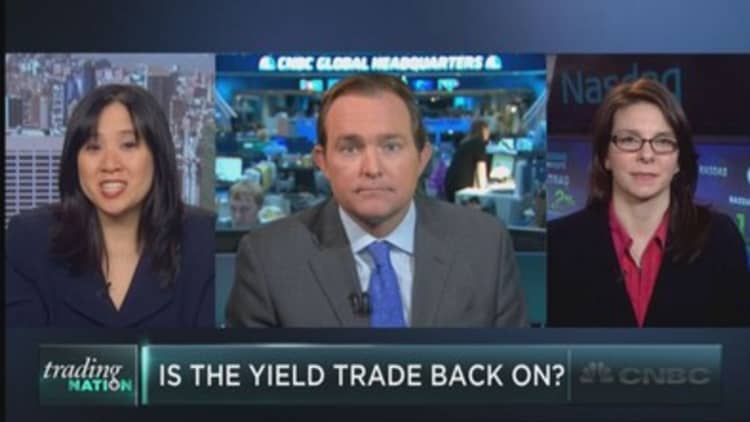
For bond traders, it's starting to feel like 2014 all over again.
At the start of last year, 10-year U.S. Treasury notes were offering a still historically meager yield of 3 percent—and the broad market consensus was that rates would only rise. Instead, bond yields dropped meaningfully, and the typically dull but high-yielding utilities stocks served as the S&P 500's best-performing sector.
This year, bonds and the stocks that trade like them were widely expected to be hurt, as investors anticipated that the Fed would finally raise rates from crisis levels. But instead, Treasurys of all different maturities are now trading at lower yields than when the year began, after the Fed's statement on Wednesday pushed back expectations of tightening. And while the utilities sector is still 2015's worst performer, it rose 2.7 percent Wednesday.
Utilities and real estate ETFs surged on the Fed news, "which would suggest that the yield trade is back on," said Stacey Gilbert, head of derivative strategy with Susquehanna. But "we know rates are eventually going up. It may not definitely be happening by June, but it doesn't mean it's not happening," so it could still be tough sledding for stock levered to bonds.
"I do think that this is a short-term dip [in yields], because if you read between the lines, the Federal Reserve is still going to be raising interest rates this year," said Kathy Lien, managing director of FX strategy with BK Asset Management. "I think that this is a good opportunity for yield traders to get back into the market at lower levels."
Read More Central bank anxiety creates major macro volatility
But just because the Fed tightens, that doesn't mean that rate-sensitive names are in trouble.
"I think that there is going to be some series of tightening this year, but in the long-term, REITs as well at utilities stocks will perform well," said David O'Malley, CEO of Penn Mutual Asset Management, which manages $20 billion for the insurance company.
He points out that while 10-year yields below 2 percent sound low, especially as the Fed is preparing to tighten, they are downright luxuriant compared with German 10-year yields below 0.2 percent.
"You almost have to suspend the absolute numbers and think about it relative to—'What else can I buy?'" O'Malley said. The premium paid to U.S. bond holders "can become a very compelling trade"—capping yields, and giving hope to rate-sensitive stocks in the process.






